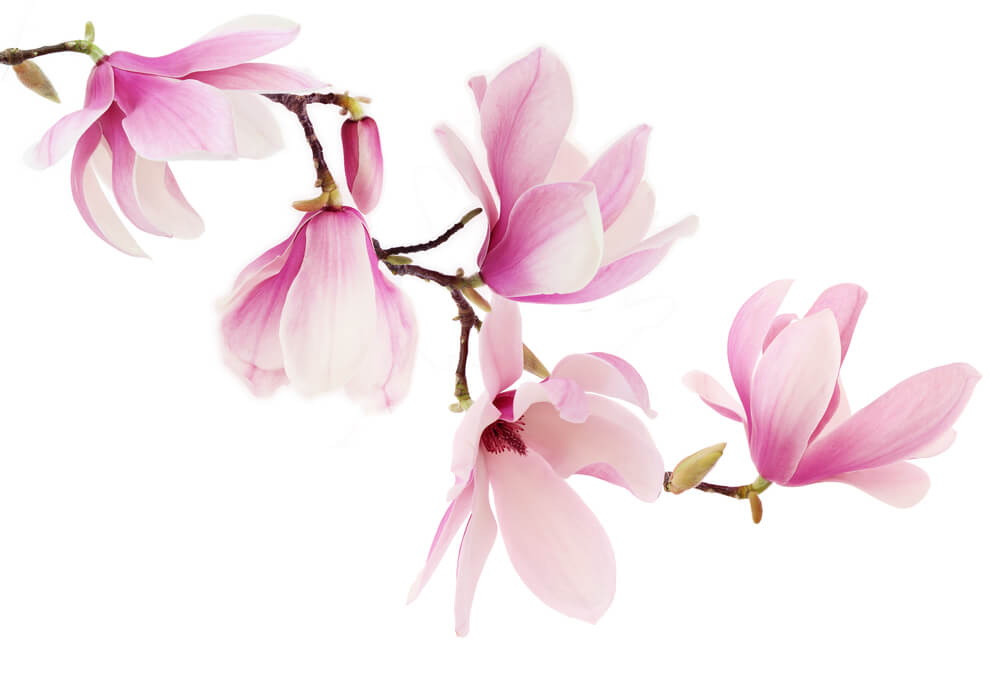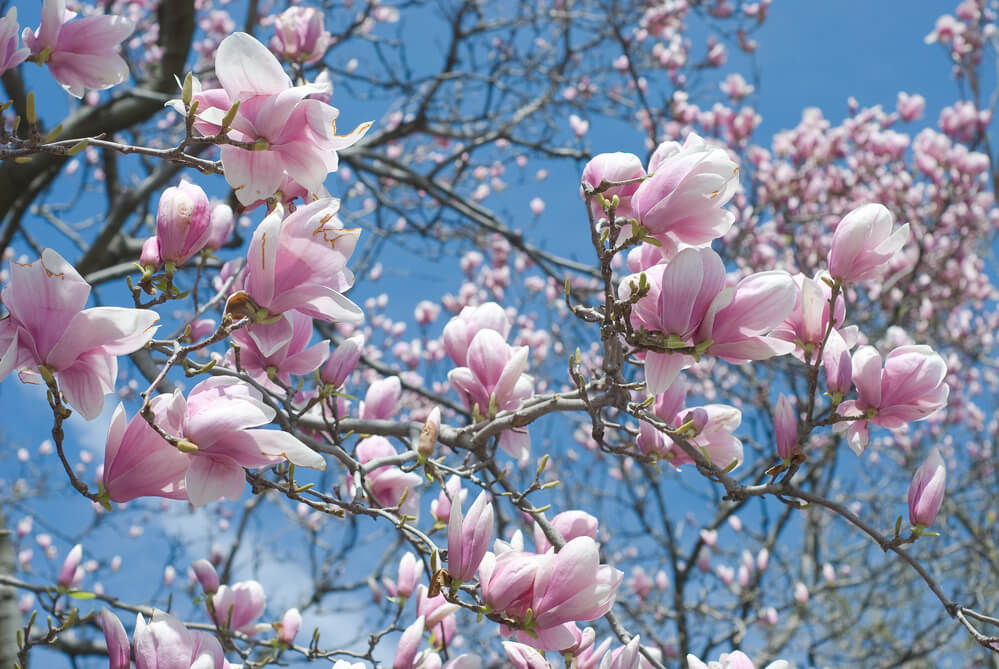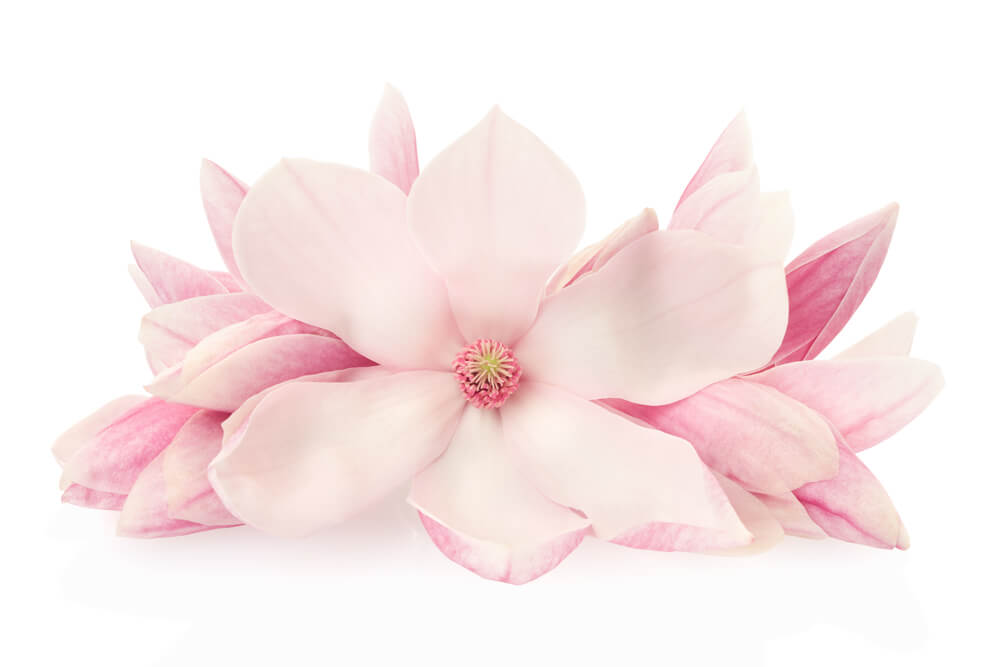Are magnolia flowers poisonous? Well, not really. Magnolia flower helps solve digestive issues, weight loss, constipation, stress, anxiety, depression, inflammation, fever, headache, asthma, and stroke.
Magnolia flower buds treat headaches, dark spots on the face, hay fever, sinus pain, common cold, and runny nose.
In this post, we’ll learn more about magnolia flowers. Stay put!
Advantages of Magnolia Flowers

Let’s examine the most significant health advantages of magnolia bark and flowers.
1. Stimulates Weight Loss
Magnolia supplements may help reduce appetite, benefiting anyone trying to lose weight. This happens even though magnolia bark could increase weight by driving food appetites because of its corticosteroid nature.
2. Treats Anxiety
Honokiol has some calming properties that have a direct effect on the body’s hormonal balance, especially stress hormones.
Magnolia may lessen anxiety and tension by calming the mind and reducing hormone release within the body by controlling the endocrine system.
It also works through a similar biological pathway to alleviate depression by triggering the production of pleasure hormones and dopamine that can improve your mood.
3. Solves Respiratory Problems
Magnolia has traditionally been used to treat bronchitis, coughing up too much phlegm, excess mucus, and even asthma.
As per research on Chinese traditional medicines, it naturally prompts the body’s corticosteroids to react to ailments like asthma, alleviating inflammation and eliminating asthmatic attacks.
4. Eliminate Menstrual Cramps
When ingested, the volatile substances included in magnolia blossoms and bark are also regarded as calming or relaxing agents that ease muscle tension and inflammation. Herbalists recommend Magnolia flower buds as a menstrual discomfort reliever.
Supplements for menstruation discomfort are frequently advised since they may offer relief, boost mood, and lessen emotional valleys and peaks related to the premenstrual period.
5. Controls Diabetes
One factor that has contributed to the magnolia’s popularity in present years is its active components’ capacity to mimic cortisol, our body’s natural stress-relieving hormone.
It assists the body in controlling the release and regulation of blood sugar by functioning as cortisol. This may greatly contribute to the prevention of diabetes.
Special Warnings and Precautions

Breastfeeding and pregnancy: It is NOT SAFE to consume magnolia flower buds while pregnant. According to some studies, magnolia may make the uterus stiffen, resulting in a miscarriage. The safety of utilizing magnolia while breastfeeding is not well understood. Avoid use to be on the safe side.
Surgery: Magnolia might cause the central nervous system to slow down. When used with anesthesia and other drugs are taken before, during, and after surgery, there is a worry that it may cause the nervous system to slow down excessively.
During and after surgery, magnolia may prevent blood from clotting properly and increase bleeding. Magnolia should be stopped at least two weeks before an anticipated surgery.
Dosing
Magnolia is a component of chewing gum, toothpaste, and dietary supplements. There isn’t enough trustworthy information to determine the ideal dosage of magnolia. Keep in mind that dosages can be crucial and that natural products aren’t always safe.
Before using, make sure to seek the advice of a healthcare professional and observe all pertinent instructions on product labels.
Frequently Asked Questions
Are magnolia flowers edible?
Yes. According to what we’ve read, there aren’t any known hazardous magnolia species. Thus all varieties are safe to eat. Different kinds have different flavors, but the typical purple and pink-tinted Saucer Magnolia is what people appreciate the most (Magnolia soulangiana).
Can you harvest magnolia blossoms?
Yes. However, you should not trim magnolia blossoms in the heat of the day. Instead, do so in the early morning or late evening. The longest-lasting flowers are those that are just starting to open.
With a pair of pruning shears that have been thoroughly cleaned, trim the flowers at an angle of 45-degree, leaving just enough stems for your vase.
Can magnolias be used as cut flowers?

Of course. Large, beautiful flowers called magnolia blossoms appear on magnolia plants in the early spring. Cultivating these trees (or big shrubs) in residential yards is simple. Magnolia blossoms are gorgeous when cut and can be used alone or in a unique spring floral arrangement.
How long do magnolia flowers remain on the tree?
Before falling off, magnolia blossoms typically remain on the tree for around two weeks. A few late and early blooms will also appear beyond the primary flowering time. Water your magnolia frequently when it is in color to prevent the blossoms from dying off too soon.
How are magnolia flowers preserved?
Put the magnolia flowers inside a vase and keep them away from heat sources and direct sunshine. Flowers can survive more extended if you keep them in a cool place. Before adding the flowers to an arrangement containing floral foam, immerse it in water to eliminate air bubbles.
Conclusion
If you had the question “are magnolia flowers poisonous” ringing in your head, you now have the response.
There are magnificent supplements and extracts of magnolia available today. Consequently, using it in big dosages is not advised.
It would help if you avoided its bark in those circumstances since it contains high levels of chemicals that can induce respiratory paralysis in children and animals.














